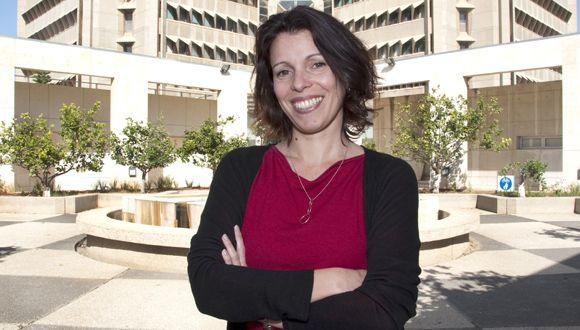New Warning Sign for Breast Cancer
TAU-led research lays groundwork for preventive treatment that may save millions of lives
A team led by Tel Aviv University identified a new indicator of metastatic breast cancer, laying the groundwork for preventive treatment that could save millions of lives.
Metastatic breast cancer, also known as Stage 4 breast cancer, occurs when cancer has spread, or “metastasized,” to other parts of the body. Mortality from breast cancer is almost exclusively a result of tumor metastasis, and lungs are one of the main metastatic sites. The five-year survival rate for women with metastatic breast cancer is estimated at 28%.
Investigating The "Black Box" of Breast Cancer
“Breast cancer patients, as well as patients with many other types of cancer, do not die from the primary tumor, but from distant metastases which have developed, sometimes after years, in essential organs such as the lungs and brain,” said the study’s lead researcher, Prof. Neta Erez, Chair of the Department of Pathology at TAU’s Sackler Faculty of Medicine. “Understanding the body’s preparation for the reception of metastases at an early stage may save millions of lives.”
The researchers explain that metastases can appear several years after the initial cases are treated. Today, methods used for follow-up screening identify metastases only when they are quite large–when the disease is at an advanced stage and unlikely to be cured.
For this reason, Erez’s research group is investigating the black box—the time period between apparent recovery and the appearance of metastases to understand the metastatic process and to find ways of blocking it in early stages. Their research in recent years has revealed that certain tissues, in organs where the metastases are set to arrive, “prepare the area” for reception and produce a hospitable environment for them, a long time before the appearance of the metastases themselves. In the present study, the research team searched for signs of these changes, which may be used in the future to identify the start of the process that predicts metastases. The researchers identified these changes in the area known as “the micro-environment” of the tumor, and specifically in connective tissue known as fibroblasts which are found in the lungs among other places.
“In a normal situation, fibroblasts play a central role in healing wounds and injury to the lungs, but recent studies revealed that cancer is successful in recruiting them and causing them to produce a supportive environment for it,” said Erez.
What is Happening in the Micro-environment of the Metastases?
The researchers compared genes sequenced from healthy lungs, from lungs with micro-metastases (very small metastases which cannot be identified using existing clinical tools) and from lungs with large metastases, in a state of advanced disease.
By identifying and comparing the respective development in the three different types of sample tissues, the researchers succeeded, for the first time, in characterizing the process that occurs in the micro-environment of the metastases. The findings provide valuable understanding about how cancer cells grow, which can then be leveraged for detection by existing imaging methods and treated to prevent metastasis.
The study’s leading research team from Erez’s laboratory included Dr. Ophir Shani and Dr. Yael Raz along with additional researchers from Tel Aviv University, Sheba Medical Center at Tel HaShomer, Tel Aviv Sourasky Medical Center (Ichilov Hospital), and the Weizmann Institute of Science. The findings were published in the prestigious peer-reviewed journal eLife.


